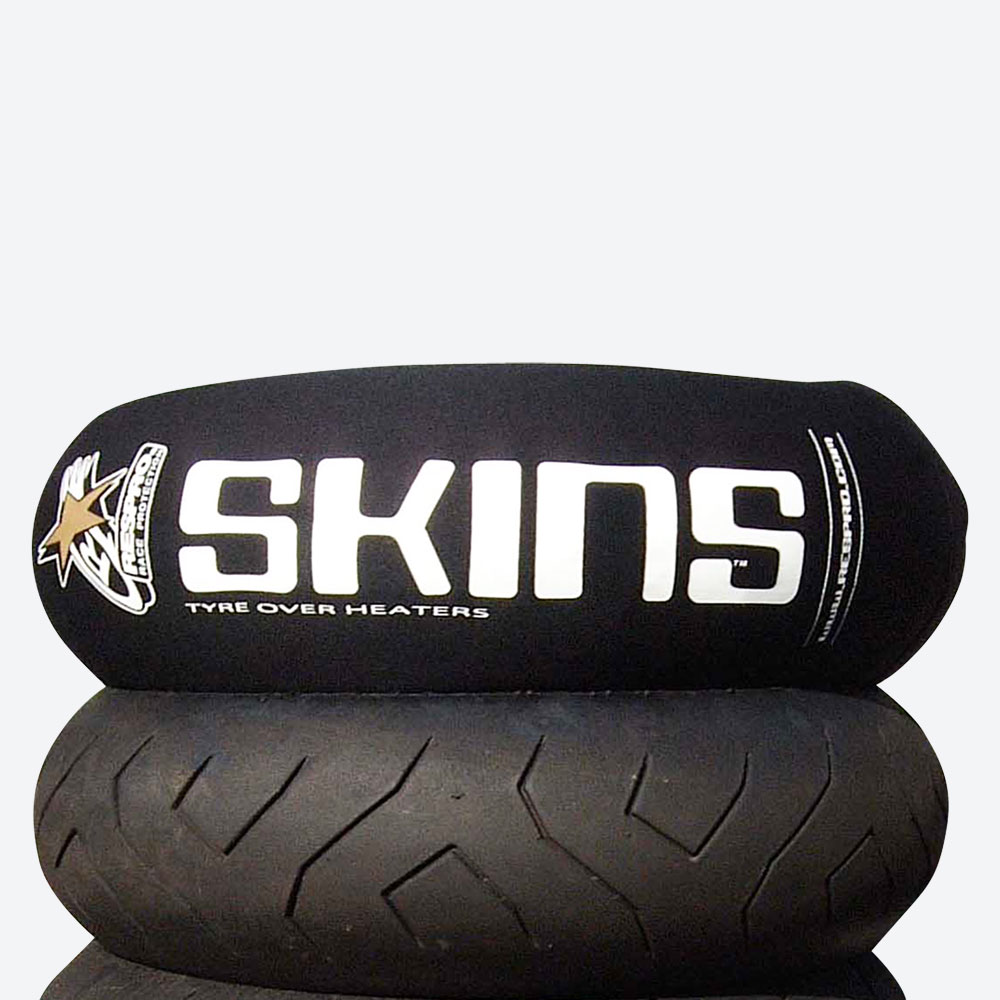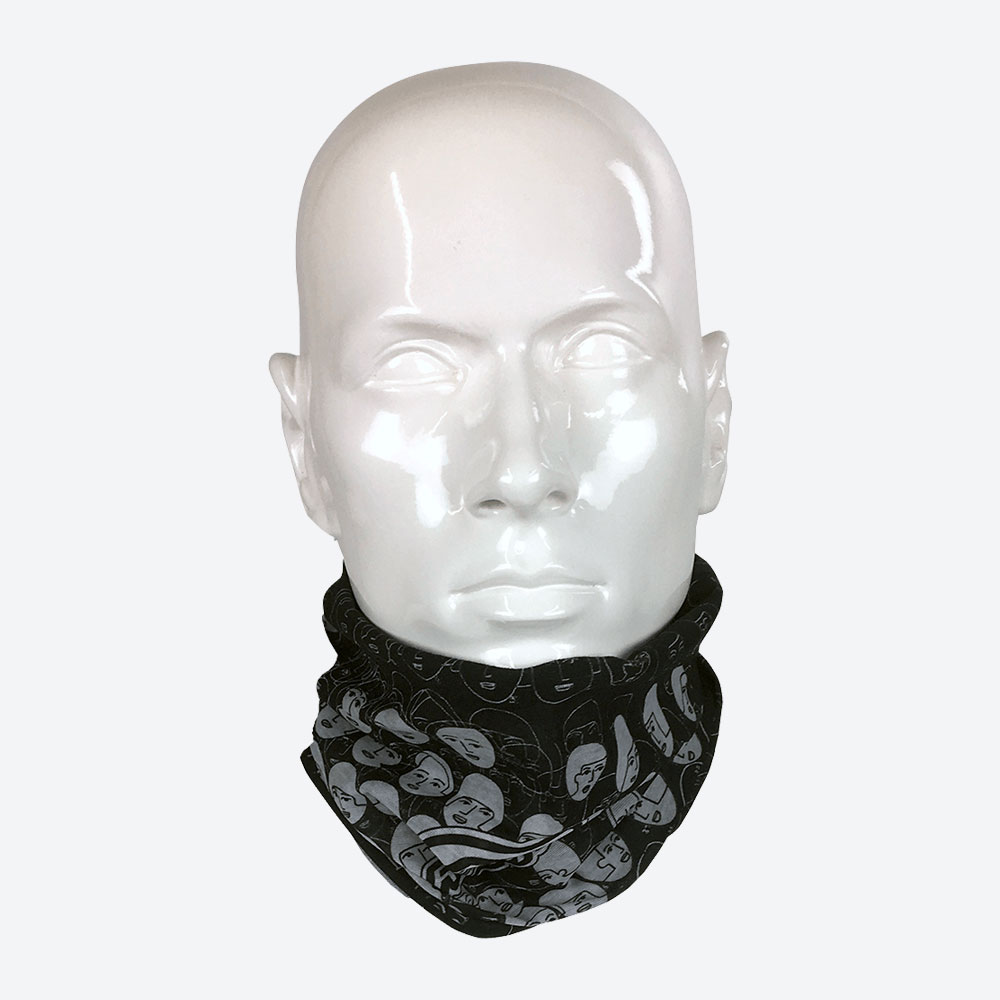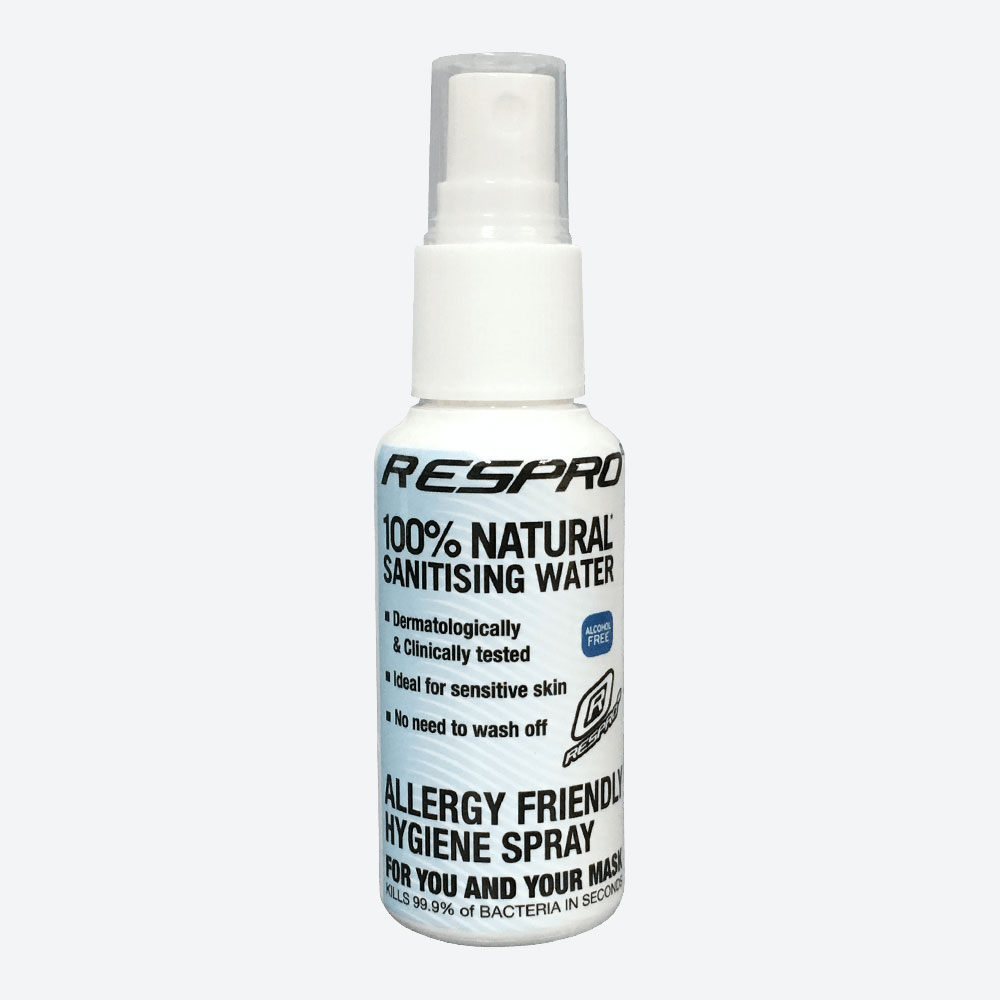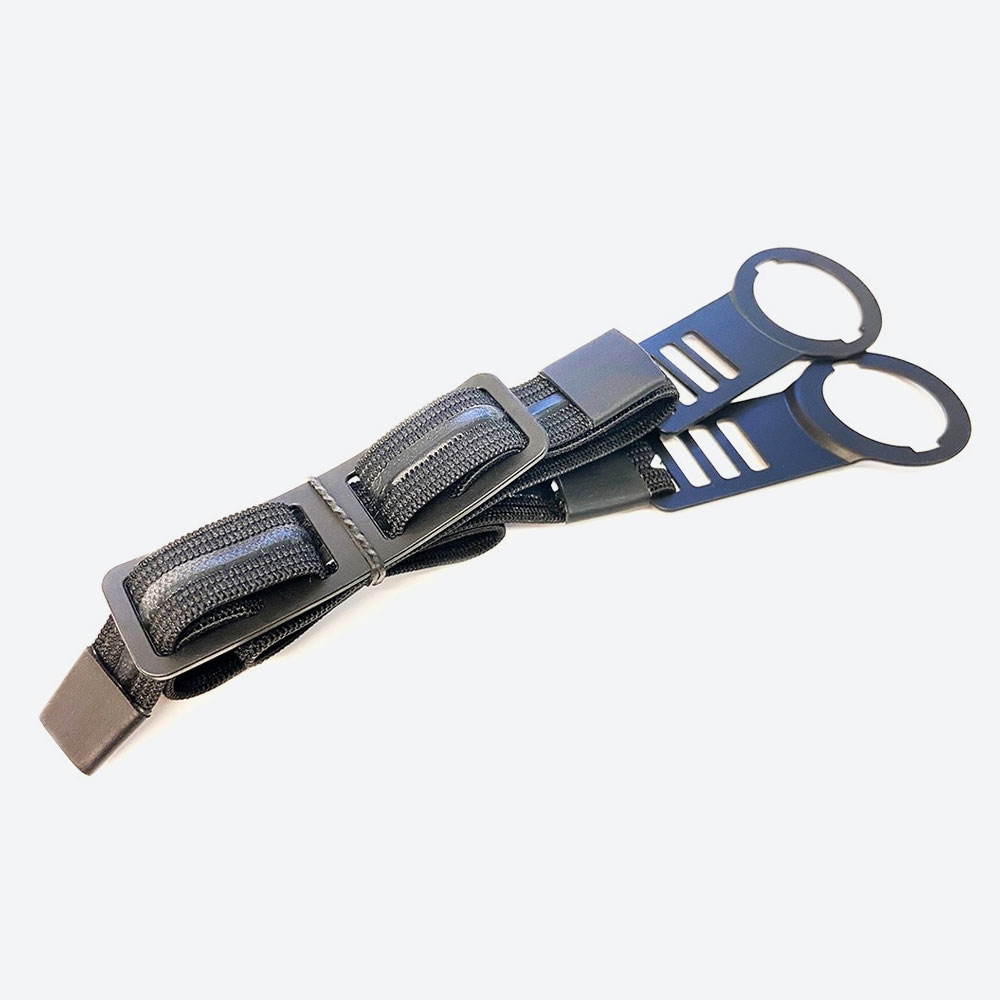Respro Tyre Warmers
Respro® SKINS™ are simple and easy to use. Made from neoprene they are effective at insulating the tyre warmer from the outside air.
Respro® SKINS™ are simple and easy to use. Made from neoprene they are effective at insulating the tyre warmer from the outside air.
This limited edition tubular ‘Talking Heads’ scarf, has a black and white print, created especially for Respro® by artist Margo of Margate
Use the Respro® Valve Blok™ in environments where there is a requirement to close your valves.
Our alcohol free, non-toxic, safe sanitiser. Perfect for sanitising your hands and surfaces as well as cleaning your Respro® Mask.
Save up to £10 by buying a multipack!
The MK2 head strap provides extra stability for your mask.
Having to breathe in a cloud of vehicle fumes surrounded by cars and buses when stationary at traffic lights is no ride in the park. Respro® has been designing pollution masks for over 30 years, using proven safety-led technology and combining it with function, style and comfort. Respro® offers a custom range of pollution masks and filters for every environment and activity to suit individual needs.
This is Your Mask, Your World. Discover our pollution mask range below.


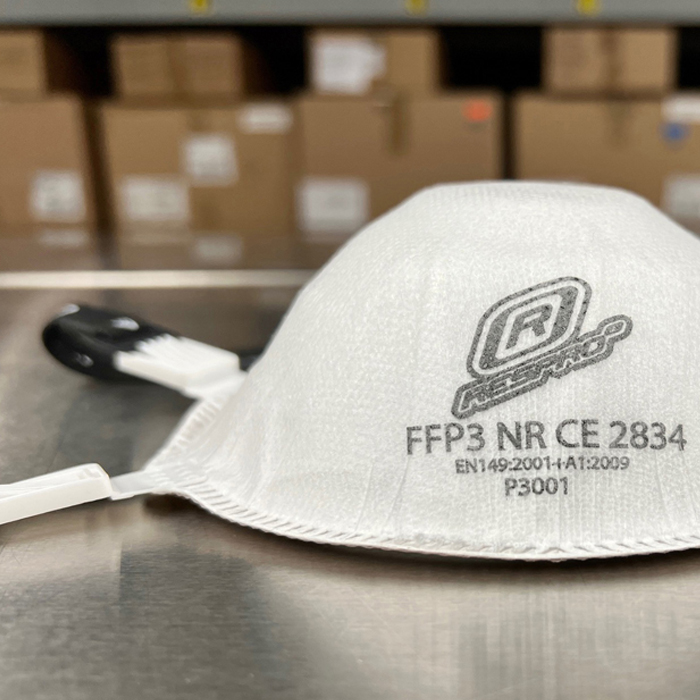
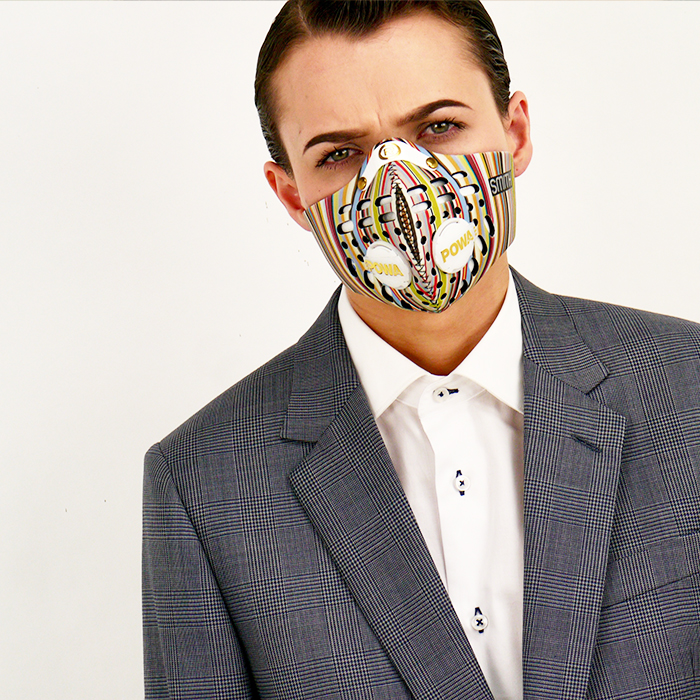

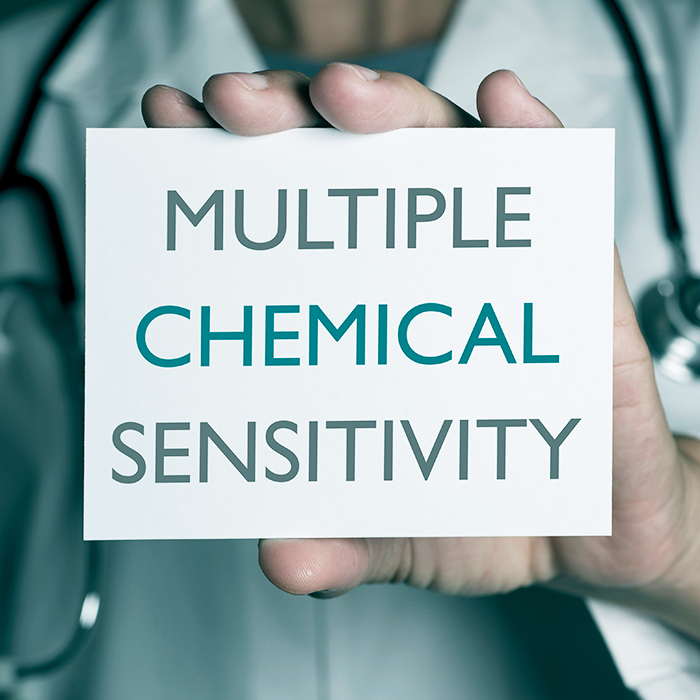

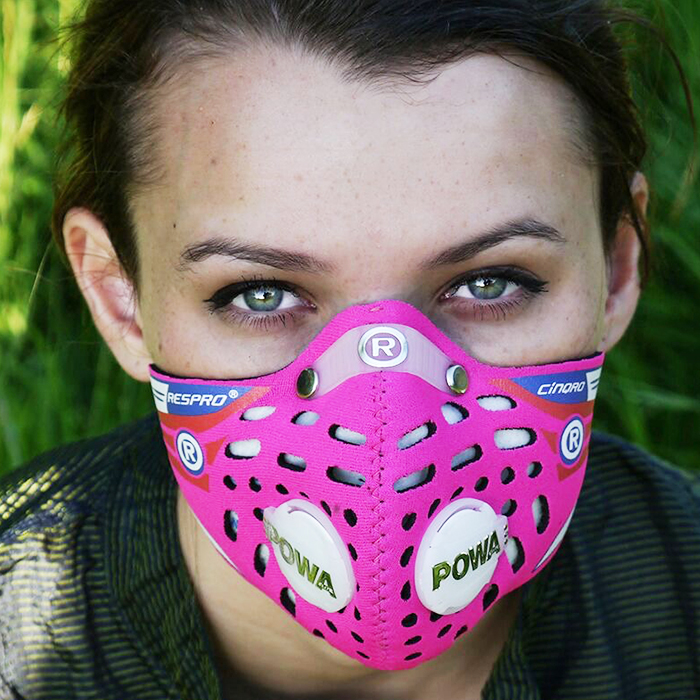
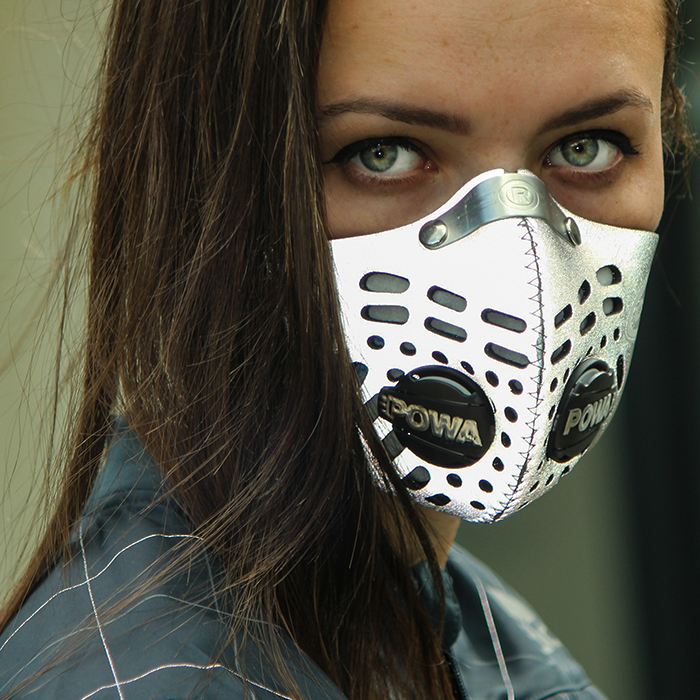
Urban commuters are exposed to levels of pollution that are known to cause respiratory issues. Exposure to ‘The Pollution Mix’ (PM2.5 particulates, gases and fumes) on a daily, weekly, monthly, yearly basis, will have an effect on the health of those exposed to it.*
(*Public Health England/GovUK)
Having to breathe in a cloud of vehicle fumes surrounded by cars and buses when stationary at traffic lights is no ride in the park. Respro® has been designing pollution masks for over 30 years, using proven safety-led technology and combining it with function, style and comfort. Respro® offers a custom range of pollution masks and filters for every environment and activity to suit individual needs.
This is Your Mask, Your World. Discover the pollution range below.

Shop with your smartphone

With our sizing service

On all orders over £25*

On all our masks
Simply enter your measurements on the biometric data form of our sizing guide. Click ‘submit to Respro’ before placing your order and we’ll confirm the right mask and size for you. By taking this step, you’ll also be eligible for Respro’s warranty programme.


Masks are not like clothes, shoes, or any other garment worn on the body. They are unfamiliar to the majority of the general public who often are unsure about how or when to use them. Written Information provided can often be too technical thus adding to confusion for the user. Mask regulation is also an issue. Ambiguous guidelines can allow unscrupulous suppliers to make wild claims about the level of protection their masks provide.
Some of these claims include:
Which in turn implies that:
As with most claims there is always a grain of truth; the filter may have been laboratory tested to filter out 99% of particulates of a given size, however, for a mask to be certified to a recognised international standard*, the whole mask has to be tested and not just the filter itself. The filter may have the potential to filter out particulates, including ‘fashionable’ PM2.5’s, but the mask which holds the filter, may not effectively seal the filter to the face.
If the mask does not provide adequate face sealing, then unfiltered air will pass around the filter. This will significantly reduce the efficiency of any mask.
Getting a complete mask product certified is a lot more complicated and expensive than just testing the filter media. A mask is put through a thorough range of tests which includes tests on both the mask and filter as one unit. User trials are also carried out wearing the full mask product as masks are often required to perform in an environment that is hostile and life threatening. This ensures that the mask is safe and meets the requirements of a given specification for an international standard for respiratory protection.
Here at Respro® we believe that if a manufacturer claims their mask is certified, then the whole mask must be certified to a recognised international standard for respiratory protection. If it is not then any claims made for the product should be cautiously considered.
*The standards are: Europe: EN149, The US: NIOSH, China: GB2626-2006, Australia/NZ: AS/NZS 1716:2012, Korea: KIOSH
View our EC Declaration of conformity.
View our Streetsmart EN149 (FFP3 NR) certificate.
EUROPEAN standard EN149 uses the the following classes:
We supply masks that conform to European Standards.
We do supply an FFP3 rated mask which is equivalent to the N99 rating. The Streetsmart™ is the highest rated product we supply. Our sports masks would be equivalent to N95. Our CE sports masks are rated FFP1-R. These include the Techno Plus™, Cinqro™, Techno™ and Sportsta™ models.
NB: If you see a model that has ‘FFP1 NR’, it means it is only usable once for an eight hour shift. Masks that are reusable should have the letter ‘R’ after the rating.
Here at Respro® we make videos so that you can see how things work.
The Pro-Seal™ is designed to guarantee a better seal and greater comfort while wearing your Respro® mask. It can be fitted retroactively to any Respro® mask.
This video demonstrates how wear a Respro® Cinqro mask.
This video demonstrates how simple it is to correctly position a Respro® mask on your face.
This instruction video shows you how to change a filter in your Respro® mask. Simply follow the instructions below.
This video shows you how to clean your mask without fuss.
This video shows you the many ways you can wear your tubular scarf.
This video demonstrates how valves work in a Respro® Mask and highlights the newest valve in the Respro® Range: the Powa™ Elite.
How to correctly position a Respro® head-strap on your mask.
Sometimes you need to find answers to your questions quickly. In the Tech pages, we have tried to answer some of the more common questions asked by our customers over the past 25 years of trading. If there is anything you require that is not on these pages, then please send an email to customerservices@respro.com and we will respond as soon as is humanly possible.
Pollution is made of two distinct categories:
Most types of pollution can be put into one or other category.
These pollutants all require an activated carbon filter media to absorb them.
There are two categories of particulates:
What can you do about air pollution? – Campaign for cleaner air and in the meantime, get a mask.
Summer Pollution is characterised by the reaction of sunlight with Nitrogen Oxides (NOX) and Volatile organic compounds (VOCs) which readily break down producing photo-chemical smog ie LLO and Nitrogen dioxide (NO2). NO2 and LLO can affect health. Evidence exists indicating that high levels of either pollutants can inflame the airways in our lungs and over a long period of time, affect how well our lungs work. People with asthma are particularly affected. DACC is really good for the filtration of LLO and NO2. So a ‘combination’ filter would be good for summer pollution.
Filters that contain DACC – Cinqro Urban
Winter Pollution is characterized by different types of air movements. Inversion weather is common at this time of year and causes a blanket of static vehicle pollution to descend on a city. Typically, towns and cities that are below or at the side a mountain range will be subject to inversion weather. Athens, Mexico City, Salt Lake City, Hong Kong, Bogota, Los Angeles and Beijing, all suffer from poor air quality issues due to inversion weather patterns in the region.
Particulate build up can be quite severe and a Hepa-type filter layer as part of the filter is recommended.
Filters that contain DACC – Cinqro Urban filter, Techno, Allergy Chemical Particle filter, Cinqro sports filter, Sports filter, Allergy Particle filter.
We offer several types of filter all of which are interchangeable within the range of masks providing they are the same size.
PM10: = ABOVE 10 MICRONS IN AERODYNAMIC DIAMETER SIZE
PM1: = ABOVE 1 MICRONS IN AERODYNAMIC DIAMETER SIZE AND BELOW 10 MICRONS
SUB MICRON: = LESS THAN 1 MICRON IN SIZE
In order to consider the effectiveness of a mask, the following points must be taken into consideration
For a mask to work properly, it has to seal the nose and mouth from the external environment. Inhaled air needs to pass through the filter material in order to remove pollution by physically trapping gas or vapour molecules. The nose clip is a vital component required to assist in making an effective seal. Failure to create an effective seal will allow unfiltered air to pass around the sides of the mask and into the respiratory system. This is known as ‘Inward Leakage’. A ‘one size fits all’ mask will invariably offer a poor fit and an ineffective seal. That is why Respro® offer 3 sizes in their mask range.
All our masks, apart from the Bandit™ scarf and the Allergy™ mask, are made from Neoprene. Being resiliently stretchable, it allows the masks to conform easily to varying facial features, sealing around the face, thus creating a good seal and a comfortable fit.
Another consideration in the sealing is sizing. As the range of sizes within the adult population varies, one size cannot fit all. For an adult female of average height/weight, we would recommend the medium size. Likewise, for an adult male of average height/weight, we would recommend the large size. By choosing the correct size and following the fitting instructions you can be assured that an effective seal can be attained.
As the Neoprene mask will stretch between the nose and cheekbone, a negative cavity will exist. This gap, if not closed up, will allow polluted air to pass through this region unfiltered, consequently reducing the mask’s overall efficiency. To affect a good seal in this region, all our masks use a nose clip which can be formed to the individual facial shape of the wearer.
Each mask contains a replaceable filter specific to either an urban or countryside environment. Depending on the environment that you are active in, you will need to assess the type of filter that is required. Essentially the City™ filter is designed for use in the urban environment and the Sportsta™ filter is used for country environments where much higher levels of particulate material can be encountered.
In order to have good breathability in a mask, especially when exercising or engaging in physical exertion, it is essential that the mask allows for a free flow of breath and does not create either a pressure drop or back pressure. Heat, carbon dioxide and water vapour, three components of exhaled breath, need to be expelled from the mask in readiness for the next breath of inhaled air. If this process of evacuation fails or is impeded, then the mask may become uncomfortable with poor airflow and may result in the wearer not using the mask.
We therefore believe that exhalation valves are an essential component which allows the mask to perform well under the conditions described above.
The valves in Respro® masks are designed to reduce or eradicate any of the above effects and are available in accessory packs, allowing the user to tailor a product specifically to their own needs.
Rarely do the valves require replacement.
The filter materials used in Respro® masks were primarily developed for use in military applications requiring excellent filtration properties yet at the same time requiring an air flow efficiency that would not impede the user’s activity.
Respro® uses the same filter materials in their masks to accommodate the filtration of a wide spectrum of pollutants that are found in the urban, country and home environments.
Each mask has a complimentary filter type for individual activities and Respro® have designed the filters so that they are also interchangeable within other Respro® masks allowing customisation for more specific applications.
Respro® filters will also benefit people who suffer from breathing difficulties with either particle or chemical sensitive respiratory systems. However, it is always prudent to take advice from your doctor if you are considering adding a mask to your health improvement programme.
As well as consumer applications the The Respro® FB-1, Techno and Sportsta masks conform to the technical specifications of European Standard EN149 FFP1 for particulate material including water based aerosols and the EV and S-3V masks conform to EN149 FFP1, 2 & 3 for particulate material.
The filter lifespan is based on the characteristics of the active urban cyclist.
On this basis we recommend that the filter be changed every 69 hours of use in the environment.
The Sportsta™, the Cinqro™, Ultralight™ & Techno™ masks are available in three sizes, medium and large and X-large. They also have equivalent sized filters. It is important to identify the correct size filter replacement for your mask in order to ensure comfort and efficiency. The size can be found by looking at the back of the mask (for masks manufactured after April 1999), which will indicate its size. Respro® have also introduced the Techno™ Gold Upgrade Kit, so that a City™ or Sportsta™ mask already purchased, may be upgraded in filtration performance.
Filter replacement for any mask is carried out by removing the filter and valve assembly (where applicable) from the Neoprene mask. This is readily effected by pushing the valves through the holes where they are situated in the mask. This procedure will release the valve and filter assembly in one unit. The valves should then be dis-assembled from the filter and the filter discarded thoughtfully. To re-assemble the product with a new filter, reversal of the procedures should be carried out.
The material we use for chemical filtration (DACC) and present in most Respro® masks (Cinqro, City, Techno, Metro) was first produced by the UK Defence Establishment back in 1980s for the protection of troops under the threat of nuclear chemical and biological warfare. Since then a number of licenses have been provided to business, including our filter manufacturer, for the production of the material for Industrial applications. In order to provide a realistic program for industrial applications the material was tested using a number of different agents. This list can be read below.
Each agent has been tested for uptake and recorded. The list has been compiled into a useable one that allows the material to be sold with credibility for industrial applications to do with both air and water filtration.
Respro (UK) Ltd use this material for filtering chemicals that are found in the urban environment that are known as Primary Pollutants and the result of vehicle combustion. These chemicals include Nitrogen Oxides including NO and NO2, Sulphur Dioxide, A wide range of Volatile Organic Compounds (VOC’s – additives in fuels) and Low Level Ozone (LLO). All these have been used in tests with DACC and rated according to their affinity to be adsorbed.
E = EXCELLENT
G = GOOD
M = MODERATE
P = POOR
The list is not exhaustive and other chemicals may well be adsorbed by DACC but have yet to be tested.
PM stands for Particulate Matter. It is the term for particles found in the air including dust, dirt, soot and smoke. These particles can be suspended in the air for long periods of time.
Particulate Matter comes in a wide range of sizes, measured in micrometres or ‘microns’. Like inches, metres and miles, a micron is a unit of measurement for distance, a very small distance. There are 1000 microns in one millimetre and about the same width of as a hair on your head.
Particulates that are 50+ microns in diameter can be seen by the naked eye, but as they get smaller they tend to invisibility. (The Invisible Threat) Particulates less than 10 microns in diameter (less than PM10) start to pose a health concern because they can be inhaled into the back of the throat region causing irritation and coughing.
Particulates less than 2.5 microns in diameter (less thanPM2.5) which include sub micron particulates (less than PM1) are referred to as fine or ‘respirable’ particulates and are believed to pose the greatest health risk.
Because of their size, the normal human filtering system, the nose and its nasal hair, are unable to trap these fine particulates. They pass through the upper airways and deep into the fine capillaries and air sacs which is where the oxygen exchange occurs to oxygenate the blood.
Current concerns are that very small amounts of toxic or carcinogenic chemicals like the VOC Pyrene, are carried on the particle and taken to the point of exchange, which allows for the potential of the chemical to be absorbed into the blood stream.
A typical sample of black smoke emitted from one of the more popular people carrying vehicles, would include particulates from 100 microns in size to particulates less than one micron in size. The sizing variation comes from the type of fuel and how efficiently it is being burnt.
Short term health effects are eye, nose throat and chest irritation, coughing, sneezing, runny nose and shortness of breath.
Constant exposure to fine particles will also affect lung function, worsen medical conditions in existence such as asthma and heart disease, or increase the risk of acute respiratory disorders.
People who exercise or are consistently being exposed to environments where the PM reading is high, really should consider appropriate precautions such as wearing a mask with a ‘Hepa-type Filter’ which removes sub-micron and all micron sized particulates.
People who cycle for an average of 30 minutes to work, at a brisk pace, are likely to breathe approximately 1800 litres of air in that journey. Due to poor air quality, the air will have a percentage of particulates that you cannot help but breathe in.
In considering the 1800 litres of air inhaled over the journey, the particulates in this large volume of air, will stick to the lining of the upper and lower respiratory tract like flies on a Vapona strip. The lungs now have to work to remove these particulate contaminants and they have to do this twice a day for two thirds of a year.
Is there any wonder why people are looking to use masks to protect themselves?
The usable lifespan of the ‘Combination’ filter is based on the characteristics of the active urban cyclist. If the mask is being used for any other activity it still applies, but the different
breathing rate and activity would put the lifespan of the filter at a proportionally shorter or longer time. For example; If the breathing rate is half that of a cyclist then the effectiveness of the filter would be twice as long. For cycle commuting on a daily basis we recommend that the filter should be replaced every month or every 69 hours, whichever is sooner.
A Combination Filter provides the broadest spectrum of filtration for gases, vapours and particulates common in urban environments with poor air quality.
What are the health effects of exposure to dust and other Particulate Matter?
Please see this 2008 Fact Sheet for more detailed information.
